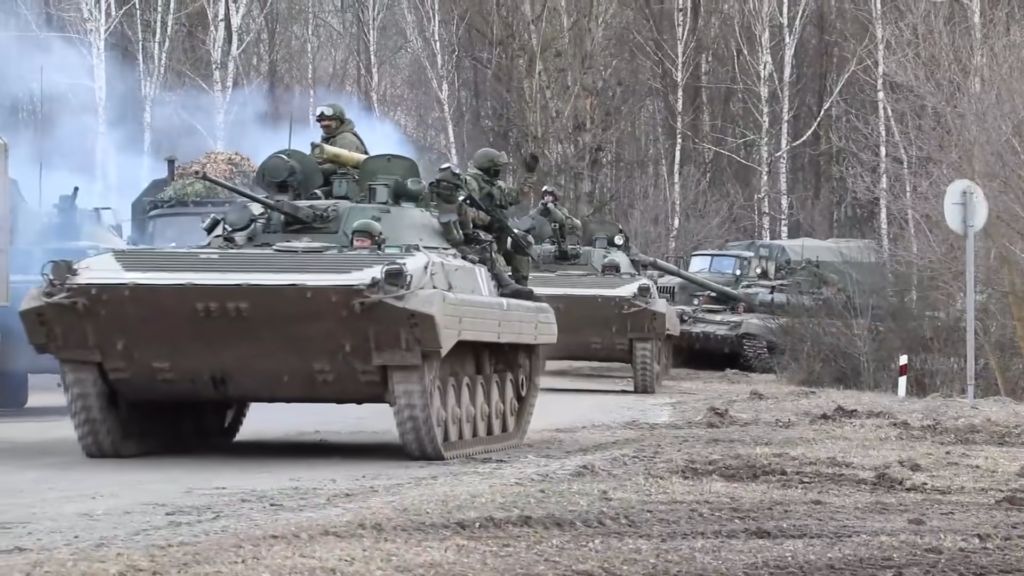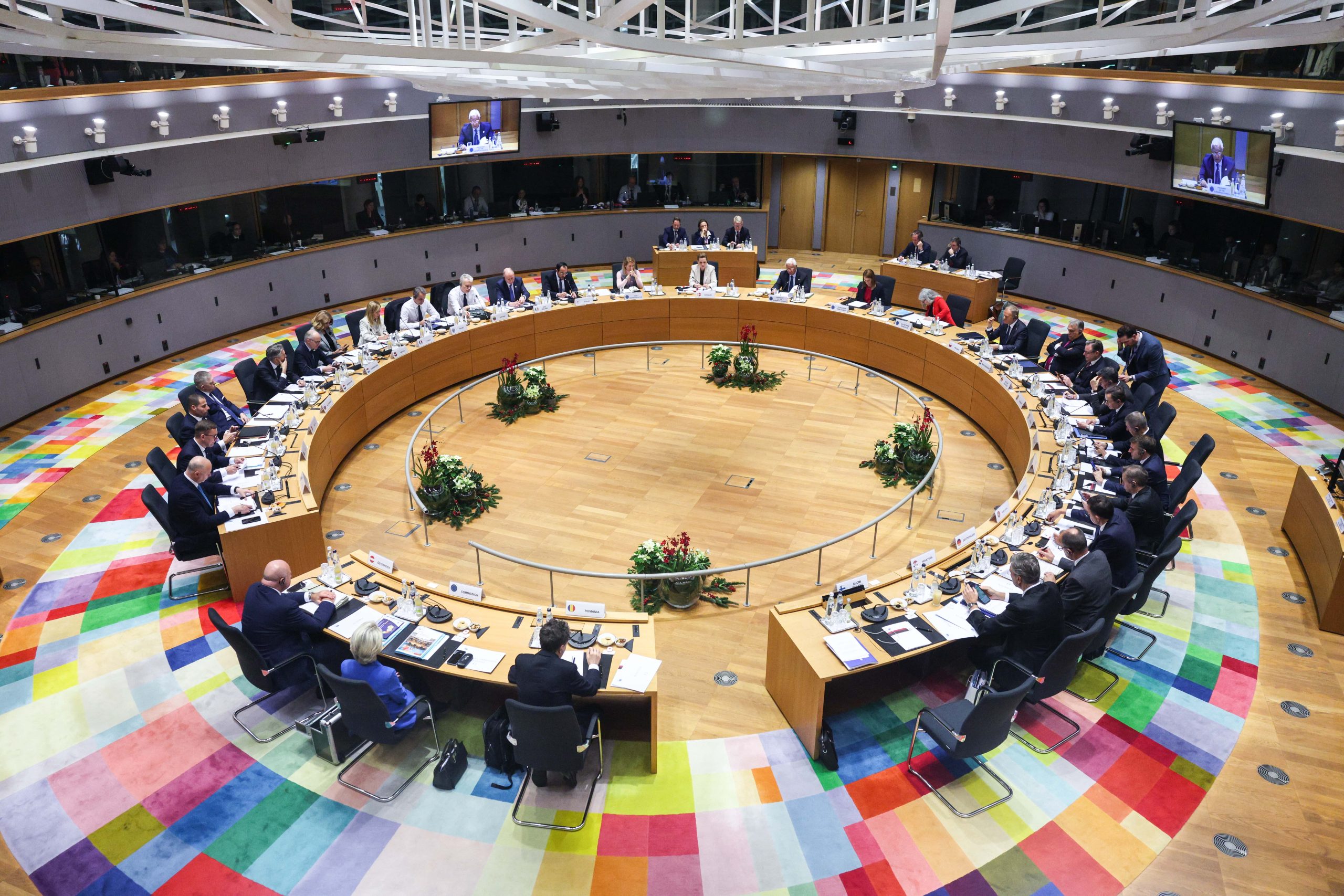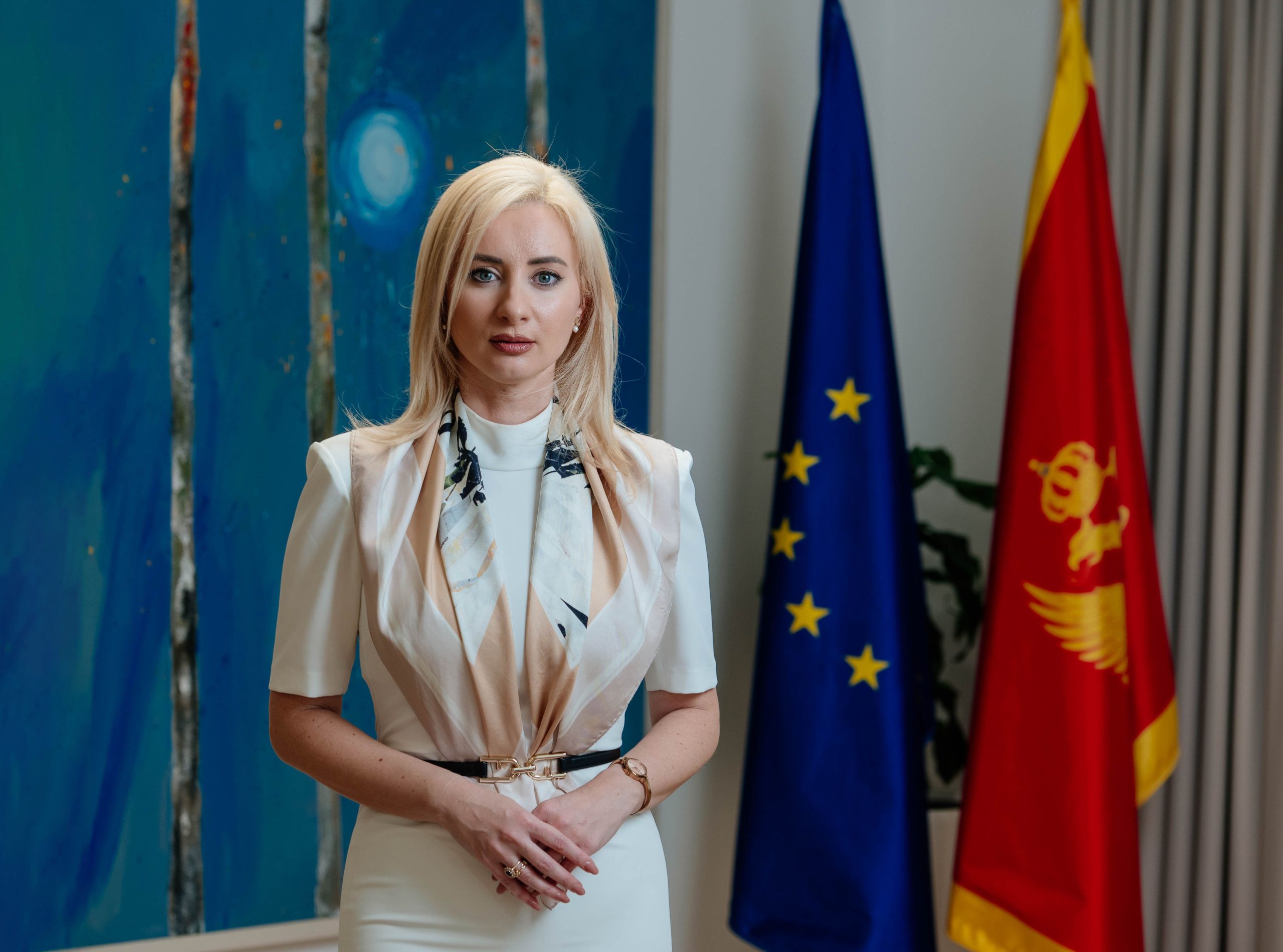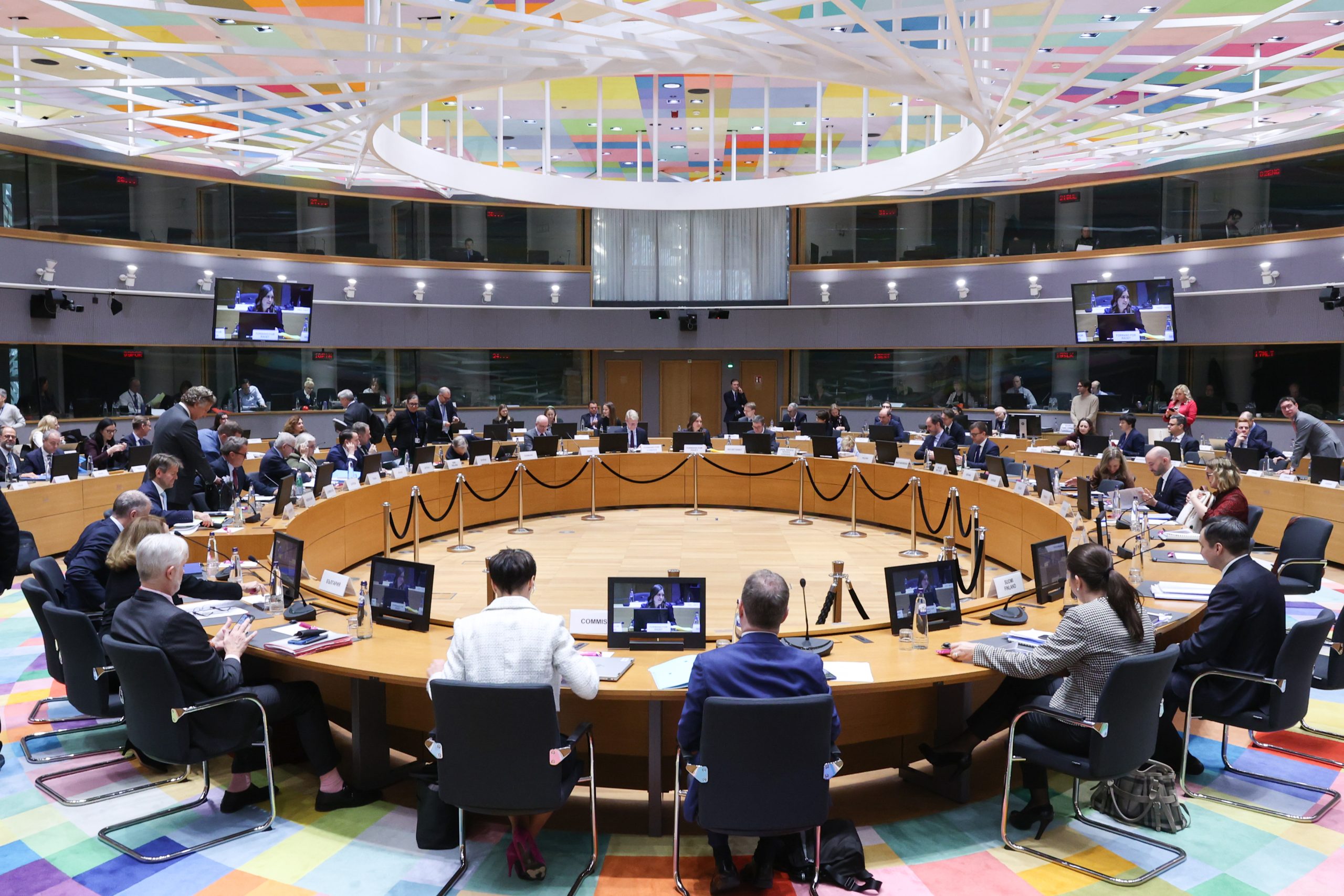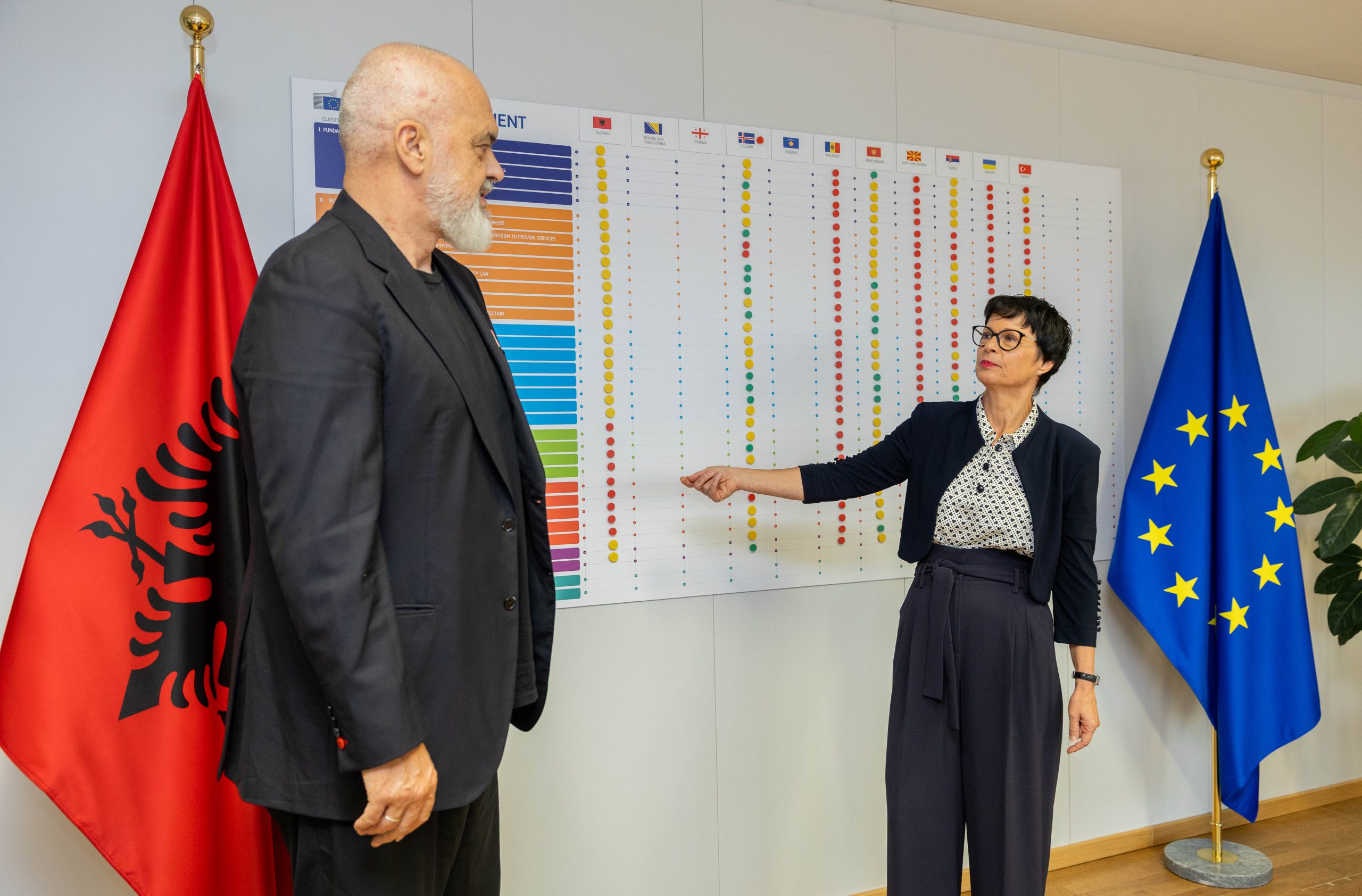Russia’s invasion of Ukraine has been regularly featured on the front pages of the tabloid media in Serbia since its beginning almost a month ago. In this regard, they are no different from other media outlets. What sets them apart, however, are openly supportive headlines in favor of Russia in the early days of the invasion, as well as a consistent interpretation according to which the West and Ukraine itself are the main culprits for the conflict.
Pro-Russian reporting of the largest tabloids in Serbia (Informer, Alo, Srpski telegraf, Kurir, Objektiv, Večernje novosti), which are also the most widely read print media in the country, has been a constant trend for years. According to available research, public opinion in Serbia is distinctly pro-Russian compared to the rest of the region, and Russian President Vladimir Putin was the most popular foreign politician in 2021. Researchers attribute these results in part to tabloid reporting.
At the same time, these media have been strongly biased in favor of the ruling Serbian Progressive Party since it came to power in 2012. They are also the source of a significant part of media attacks on the opposition and critics of the government.
There are strong indications that the ruling party has an influence on the editorial policy of these media. These include “leaks” from state institutions to tabloids, but also the fact that they are regular winners of the open calls for public funding, which are considered to be politicized.
“Ukraine attacked Russia”: The prelude to the war
One of the front pages of the tabloid Informer which caused the most controversy was published on 22 February 2022, two days before the Russian aggression. The main headline read “Ukraine attacked Russia”, while another headline informed readers that “America is pushing the world into chaos”. Only at the very bottom of the page was the main news in most of the world’s media – that Russian President Vladimir Putin had announced the recognition of the People’s Republics of Donetsk and Lugansk the night before.
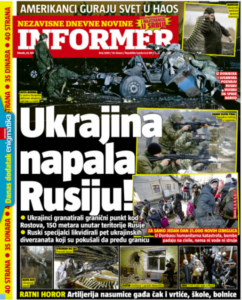
“Ukraine attacked Russia yesterday! Russia’s military has killed five Ukrainian soldiers trying to cross the border in two armored vehicles”, Informer reported.
This story was also mentioned in the BBC’s report on the events the day before as an example of Russian disinformation.
“There is no evidence to suggest that any of these things happened, but officials are forced to deny any claim, no matter how absurd or unlikely,” BBC correspondent Paul Adams wrote on 21 February.
Towards the end of the article, Informer also published brief information that the Ukrainian government denied the attacks on Russia and called the reports fabricated.
The first version of the front page of Večernje novosti, another pro-government newspaper, from 22 February, also published information about the murder of five Ukrainian soldiers. That information was removed from the printed version that was available in Belgrade that day, probably after it was marked as fake news.
The front page of the Informer a day later, on 23 February, reported that “Putin checkmated Ukraine”, and that, the day after Russia recognized the independence of Donetsk and Lugansk, the Ukrainians are backing down and that “there would be no war”.
A day later, Russia attacked the entire territory of Ukraine from several directions.
First days of the war: Rooting for Russian quick victory
The first days of the war, especially 25 and 26 February, were marked by headlines in an extremely supportive tone of Russia, with predictions of Moscow’s imminent victory.
“Even with tons of weapons, ammunition and equipment delivered by Western allies to Ukraine in just the last few weeks, the Ukrainian army has been overpowered by larger, more technologically advanced Russian forces that have launched a multi-pronged invasion, New York Times reports”, published Srpski telegraf, in an article titled “Russians trample Ukraine like a shallow stream”.
On Friday, 25 February, Informer published the following headline: “Putin’s lightning strike – Russians arrived to Kyiv in a day”, informing readers that “all Ukrainian air defenses were destroyed in a few hours”, which was obviously incorrect information, considering that Ukraine continued to use anti-aircraft defense systems in the coming weeks.
The front pages on the same day had a similar tone: “The awoken bear is furious: The Russians overran Ukraine in a day”, Objektiv reported, while Alo wrote that “Putin reached Kyiv in a day” and that “a Russian hurricane hit Ukraine.”
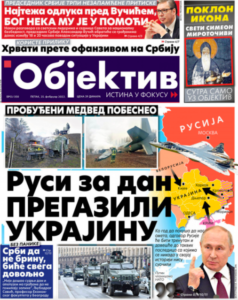
In the next two days, the tabloids reported that Ukraine was about to surrender, which also turned out to be incorrect.
“Russians in Kyiv: Zelensky close to capitulation” (Objektiv, 26 February), “Russians in Kyiv: Ukraine begs for mercy”, “Putin tramples everything in front of him” (Informer, 26 February), “Putin walks into Ukraine and dictates terms of negotiations “(Alo, 26 February) – these were some of the headlines in the first days of the war.
The assessments of the success of Russia’s progress still differ, but it is currently certain that there was no “lightning-fast” victory of Russia nor is the Russian side, in the fourth week of the conflict, able to fully dictate the terms of negotiations.
At the time of publishing these headlines, official Serbia had just formulated its position on the event, which was announced on the evening of 25 February, 36 hours after the war began. The delay was criticized by part of the public.
The conclusions adopted by the National Security Council expressed support for Ukraine’s territorial integrity and stress that its violation was “wrong”, but also took the position that Serbia would not impose sanctions on Russia.
Over the next few days, pro-government tabloid reporting remained markedly pro-Russian. On 1 March, Informer reported the Russian agency Sputnik, which quoted the announcement Russia’s Defense Ministry said that the Ukrainian army “uses ammunition filled with phosphorus on a large scale, which is prohibited.”
This information was released under the following headline: “UKRAINIANS CROSS THE THRESHOLD OF PUTIN’S TOLERANCE, USE FORBIDDEN WEAPONS?! If Moscow answers identically, ONLY DUST WILL REMAIN”!
Later, the Ukrainian official, as reported by The Times, accused Russia of using the same weapon.
The tabloid Alo, on the other hand, published several headlines against the West, namely the European Union and the United States, on its website. Some of them were “THE TRUE FACE OF FASCISM: The West started an economic and political war aimed at the complete destruction of Russia’s identity”, on 1 March, which stated that the West, through planned sanctions, decided to “stifle the only voice of human freedom”.
Another headline, published the same day, read: “EMPIRE OF LIES: Here is how the West reports on the Ukrainian crisis – the dead wake up when the cameras go off, photomontage is the new weapon!”. It exemplified the trend of anti-Western reporting that had already begun and which, despite changes in some other aspects of reporting, continues.
A shift?
At the emergency session of the United Nations General Assembly on 2 March, Serbia, together with 140 other countries, voted for a resolution that unequivocally condemns Russian aggression. Since that day, the reporting on the war by the tabloids has somewhat changed, though it would be a stretch to call it a complete reversal.
On the day of the vote, the Ambassadors of the EU Member States published an op-ed in the tabloid Kurir, in which they called on Serbia to support this vote in the United Nations. At the same time, Kurir published an article on the front page of that issue condemning the “hypocrisy of the West” that bombed the Federal Republic of Yugoslavia in 1999 and now condemns Russian aggression.
After the adoption of the resolution, Informer‘s website announced that it was asking Russia to suspend the “special operation”, a term used by the Russian authorities for the war. The text of the UN resolution used the term “aggression”.
However, some commentators, such as Balkan expert Florian Bieber, wondered if there was a turnaround in reporting when the same tabloid called the Russian army in front of the city of Mariupol “occupiers”.
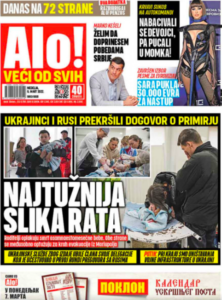
Over the next two weeks, tabloid reporting stopped openly supporting Russia’s aggression and took a more neutral stance towards the conflict, which the Informer marked as the “fratricidal war” on 7 March, although the headlines remained sensationalist. The focus shifted towards the consequences that the war would have on the world and Serbia, with titles such as “New Chernobyl looming” (Kurir, 5 March) and “Economic Apocalypse” (Informer, 6 March).
The suffering of the population in Ukraine was also highlighted.
“A VIDEO THAT BREAKS THE HARDEST HEARTS!” A boy crosses the Ukrainian border: EXODUS, FAMILIES ARE DIVIDED!, Republika, portal of Srpski telegraf, published on 9 March, reporting about a boy who crosses the Polish-Ukrainian border with his mother, fleeing the war.
In the meantime, Informer‘s website reported on 10 March that the situation in besieged Mariupol was dramatic and that a large number of people had no food. A day later, the same tabloid reported that “more than 954,000 Ukrainians do not currently have electricity due to the Russian invasion of Ukraine”, using stronger words to describe Russia’s military action than a week ago.
Večernje novosti, a majority state-owned newspaper, remained an exception, continuing to portray the war as justified and emphasizing neo-Nazi elements in the Ukrainian army.
On 8 March, the paper published a “historical supplement” on “two decades of subservience to neo-Nazis in Ukraine.” The withdrawal of the Ukrainian army was reported a few days earlier under the headline “Nazis are fleeing and destroying everything in front of them”, while on 13 March, an article from the pro-Russian Pečat magazine entitled “Why Russia is right” was published.
A constant in reporting: The main culprit is the West
Even though they have taken a somewhat more neutral position towards the sides in the war since the beginning of March, all the tabloids have stuck to a message that the West is to blame for the conflict. This narrative builds on the long-standing trend of anti-Western reporting by these media.
On 9 March, Republika portal published the results of its poll, in which, as stated, over 2,000 people voted, answering the question “Who is to blame for the war in Ukraine?”. The results were: 8.72% Ukraine; 9.58% Russia and 81.7% Western countries. These findings fit the interpretation of the causes of the war in the pro-government tabloids.
For example, the website of Informer announced on 10 March that “the report of the former US ambassador to Moscow from 2008, which was published by Wikileaks, shows that the US knew very well what consequences Ukraine’s membership in NATO could cause.” Warnings from Henry Kissinger, Noam Chomsky and American politician Tulsi Gabbard about provoking Russia by expanding NATO were also reported, along with headlines such as “The Catastrophe will haunt the West”.
Also on 10 March, Informer announced that “Americans are pushing Poland into war with Russia”, due to disagreements over the delivery of MiG-29 fighter planes to Ukraine. This is how Washington’s policy towards Kyiv was interpreted before the start of the war as well.
A number of tabloids also focused on alleged weapons – nuclear and biological – that Ukraine received from the United States with the intention of using them against Russia in the future. This narrative suggested that the West and Ukraine were responsible for the war, which was preventive.
“Ukraine once received plutonium of the required quality from abroad for the production of nuclear weapons, and there is reason to believe that this did not happen without the participation of the United States,” said a representative of “one of Russia’s competent departments”, Sputnik reported on 6 March.

Earlier, the same media reported that the former Ukrainian Prime Minister Mykola Azarov, who held that office during the mandate of the pro-Russian president Viktor Yanukovych, said that NATO planned to start World War Three by using nuclear weapons against Russia, and Kyiv would play a key role in its launch.
No concrete evidence in support of these claims was presented in the articles. Večernje novosti also announced on 6 March that Ukraine was on its way to making atomic weapons in the near future and that Russian agencies and media published extensive articles about it on Sunday, citing “a competent source”.
On the same day, Večernje novosti reported that the spokesman of the Russian Ministry of Defense, Igor Konashenkov, “explained that the Pentagon was seriously concerned after the start of the Russian operation to protect civilians in Donbas because of the possibility of disclosing the conduct of the secret biological experiments in Ukraine.”
“We received documentation from the employees of the Ukrainian bio-laboratories on the urgent destruction of especially dangerous causes of plague, anthrax, tularemia, cholera, and other deadly diseases on 24 February. The documents are now being analyzed by Russian experts from the corps of radiation, chemical, and biological protection,” Konashenkov said.
A few days later, the newspaper Alo reported the allegations of the Russian Ministry of Defense about the UP-4 project, which was allegedly realized with the participation of laboratories in Kyiv, Kharkiv and Odessa with the aim of spreading pathogens through birds, in cooperation with the United States.
According to the Russian military department, as reported by Serbian tabloids, the Americans have already managed to remove most of the documentation on this and similar projects, including databases, biomaterials and equipment, to the Lviv Research Institute of Epidemiology and Hygiene and the US Consulate in Lviv. It was later announced that the details of the project were also on the website of the US Embassy in Ukraine, but that they were removed from there.
The BBC subsequently published an article stating that there was no evidence for any of these claims. On 9 March, the Serbian daily Politika also published an article alleging that Ukraine, with the assistance of the United States, was preparing biological weapons, and since 1998, America has supported the reconstruction of Soviet laboratories. However, the article maintained that biological weapons “could” have been developed in these laboratories and not that this was definitely the case.
This article was written as part of the Regional Initiative to Combat Disinformation.
